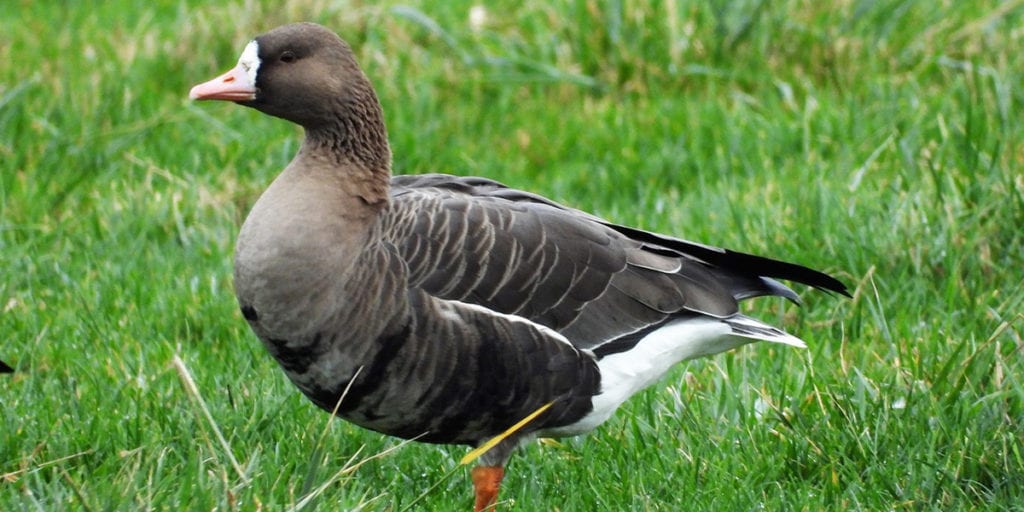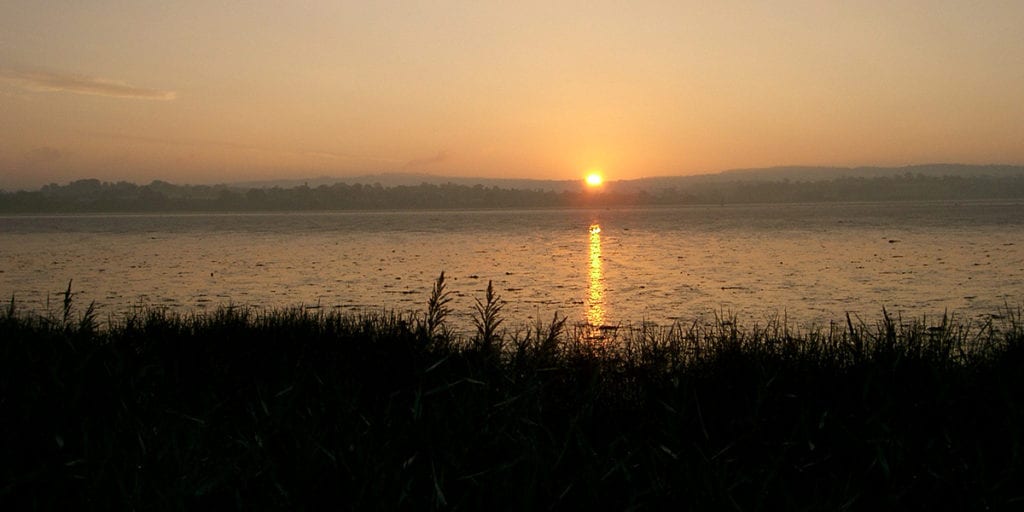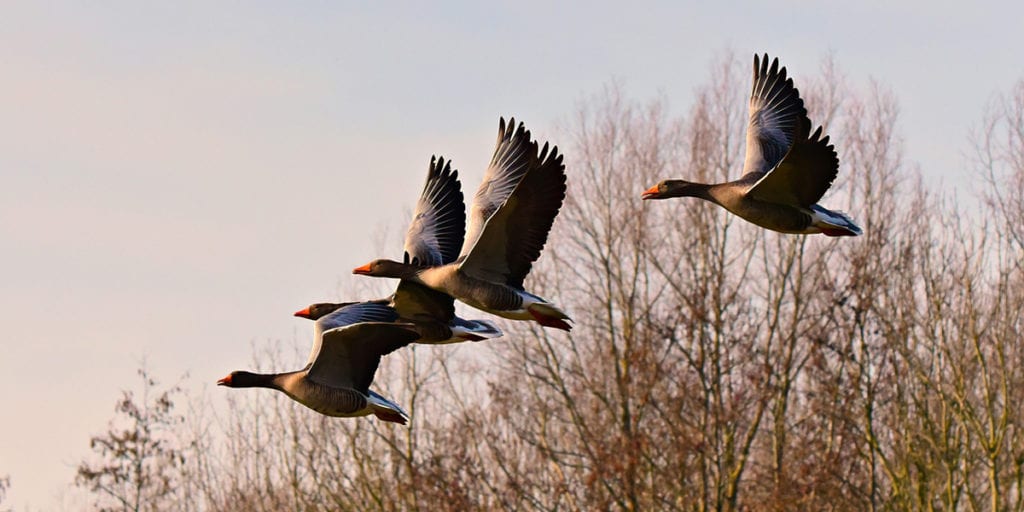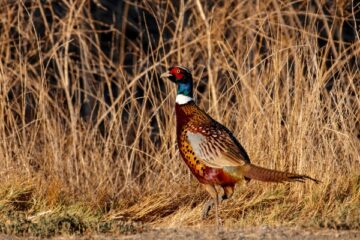Behind the scenes of BASC’s wildfowling team
BASC is the only shooting organisation with a department wholly dedicated to wildfowling. In 2018, I was recruited to head up BASC’s wildfowling team and here’s a little bit about what we have been up to…
My remit has been to ensure that those members who wildfowl and those who want to give wildfowling a go have the opportunity to do so. At the same time, I need to keep abreast of all the technical, regulatory and political threats to our sport.
BASC’s wildfowling team keeps going from strength to strength and continues to help members and clubs with an array of matters. This year, the department has been strengthened further by moving within the conservation directorate.
What does BASC’s wildfowling team do?

One of our main responsibilities is to contribute to the formation of policies relating to wildfowling. Our work around Greenland white-fronted geese is just one example of this.
After complaints from the African-Eurasian Waterbird Agreement (AEWA), there was a very real threat that the UK government would impose a ban on the shooting of white-fronted geese, the most common grey goose in the Western Palearctic. However, following a successful evidence-led campaign by BASC, only Greenland white-fronted geese were afforded full protection. Read more about BASC’s intervention here.
We also respond to various consultations relating to wildfowling. A notable example relates to Highly Protected Marine Areas (HPMA). Following meetings with Defra and a successful campaign, the intertidal zones were not included in any HPMAs. If left unchallenged, this additional layer of conservation legislation could have had serious implications for wildfowling.
Working with external organisations and regulators
Maintaining good working relations with policymakers and regulators is one of our top priorities. We work with Natural England (NE), Natural Resources Wales, Scottish Natural Heritage, the Environment Agency, Defra and all UK governments to ensure that there is a safe future for wildfowling in the UK. We also jump in at any opportunity to introduce government workers to our sport.
Not long ago, with help from affiliated clubs, we ran a series of training events for around 30 NE employees who are responsible for the consenting and licensing of wildfowling.
We also provide the secretariat for the BASC Wildfowling Liaison Committee and manage the account for the Joint Group on Wildfowling and Conservation on Tidal Land, which helps ensure wildfowling’s safe future on the Crown Estate’s land.
In addition to this, we assist clubs that lease Crown Estate land with renewals and management plan reviews every five years. The system that we set up to help wildfowlers and other shooters enter their annual bag data online, which is a requirement of Crown Estate leases, has been key to this.
A support and advice service

BASC’s wildfowling team provides specialist advice and support to members and affiliated clubs. On average, we receive over 50 calls and emails each month about a variety of wildfowling-related matters. We also manage BASC’s severe weather policy, working closely with the Joint Nature Conservation Committee, and run several events such as the National Wildfowling Conference.
Reviewing and updating various wildfowling publications falls within our remit, too. We work with the publications team on the Wildfowling Code of Practice, the BASC Members Wildfowling Permits booklet, and the Club Manual which is designed to guide clubs through the task of running a wildfowling club. Not forgetting the articles we work on for BASC’s Shooting and Conservation magazine, and our collaboration with the wider communications team.
Of course, to do all this, we need a team of passionate, hard-working individuals.
Meet BASC’s wildfowling team
As BASC’s head of wildfowling, I’m responsible for the department’s output and ensuring we are ready to tackle any challenge thrown our way. I’ve been a wildfowler all my life. During my 13 years at BASC, I have also gained experience in all shooting disciplines, firearms, and conservation legislation. I’m the first point of contact for agencies and briefings at government level.
My latest challenge, with essential support from colleagues across the organisation, is the NE consenting saga. By the time you read this, I am hopeful that a short-term solution will have been found and put in place to secure the continuation of wildfowling for the clubs affected, but long-term battles are likely to carry on for some time.
Shane Robinson, BASC’s wildfowling officer, has done nearly 60,000 miles and attended over 70 individual club meetings during his first 15 months in the role. He is also the initial point of contact for any wildfowling enquiries and is responsible for numerous projects. These include the Lindisfarne permit scheme and training programmes for BASC staff, members, external agencies and stakeholders. Shane is a lifelong wildfowler with almost 40 years of experience under his belt. He has held various committee roles and is a member of multiple clubs around the country.
Support from other BASC teams
Beyond BASC’s wildfowling team, we work closely with other BASC departments and colleagues. Sarah Pinnell from the biodiversity team has been shadowing Dennise Shepherd with our consenting workflows. In addition, Cathie Simister and Kiri Thompson from the research department help us gather the data we need, and liaise with wildfowling clubs for bag returns, helping with our Crown Estate commitments.
We work closely with Matt Ellis, BASC’s head of science and research, who is currently helping us work through the NE legal paperwork and assisting with the complex issues on the Humber and Morecambe Bay European Protected Sites (EPSs). Matt also worked with the Illinois Hunting Association to find out how the American model for sustainable waterfowl hunting could be applied in the UK to fit our needs. He also represents BASC at AEWA, FACE and the Waterfowlers Network, among many other groups.
Heather Warrender, from Matt’s team, has been instrumental in scrutinising WeBS data and brought together the site evaluation information to support our clubs’ Crown Estate management plans. She is also responsible for the duck wing survey in conjunction with the WWT. Read a feature on this project here.
New goose wing project

This winter, we will be launching a new goose wing project. We will be collecting photographs to identify and catalogue the species and age ranges of birds taken during the season.
This data will help us look at the overall goose population in the UK and study certain species, such as pinkfoot, greylag and Canada geese, in more depth to understand the population trends during the past decade.
Over the last few months, the wildfowling appeals in Wales and consenting issues on EPSs in England have been our key concerns. These workflows have demonstrated the real strength of BASC. The commitment of all involved, including BASC staff, wildfowlers themselves and the BASC wildfowling committee, will be essential to ensure a sustainable future for wildfowling.
For wildfowling-related advice or support, please contact our team on wildfowling@basc.org.uk.
Header image by Laurie Campbell



